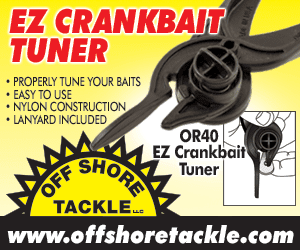The onset of warm summer weather heralds not only comfortable temperatures for boaters and outdoor lovers, but a similar burst of activity beneath the waves as fish of all species begin exhibiting traditional summer behavior in earnest. Fishing the transition from spring to summer can provide some excellent bites.
Walleye
Walleyes set up on midlake structures, where classic livebait rigging with leeches produces loads of fish. In natural lakes, focus on the 12- to 18-foot levels for shallower fish, perhaps dropping down as deep as 25 to 28 feet.
Where shallow reefs exist, try slipbobbering with leeches when walleyes move shallow to feed under windy conditions.
On reservoirs throughout the plains, troll bottom bouncers and spinners tipped with nightcrawlers along windswept shoreline points and flats.
Pike
Fishing the transition from spring to summer on natural lakes, pike enthusiasts often fish the same deep weed areas as walleye fishermen, but tend to toss or troll hardware in the form of large crankbaits or spinnerbaits.
Early- to mid-June is prime time to catch them before warm summer water temperatures drive the largest pike down into deeper water.
Largemouth Bass
Largemouth bass tend to dominate the shallow flats in weedy lakes. Versatile largemouths can range anywhere from shallow lily pads and reed beds, to inside weededges, spread through mid-depth (4- to 12-foot) weed flats, to outer weedlines at the 12- to 18-foot levels.
Weedless frogs and spoons haul big bass out of pads, while spinnerbaits and Texas-rigged plastic worms excel in reeds. Across weedflats, tandem spinnerbaits, buzzbaits or Rattlin’ Raps cover water quickly and trigger strikes.
Along deep outside weededges, aggressive bass rise to slow-falling jigworms, and to crankbaits cast parallel to the weedline. If the fish are a bit fussier, probe the outer edges with Texas-rigged plastic worms or other slow, tempting techniques.
Smallmouth Bass
Fishing the transition from spring to summer can be very water level dependent. High water levels draw smallmouth bass in rivers into flooded shoreline wood cover. Spinnerbaits and small crankbaits excel for probing into the cover as you drift downstream.
As the water drops in midsummer, bronzebacks shift their focus to current breaks adjoining midriver holes. Rock points, gravel shoals, and large midriver boulders often host the bulk of the population.
Try #2 Blue Fox Spinners, topwaters like Twitchin’ Raps, or Rapala DT 4 and DT 6 crankbaits in crawfish imitations.
Panfish
June is prime time to fish outside weedlines for both crappies and big bluegills. For crappies, focus on sharp-breaking points and turns where weed walls meet 20 to 30 feet of water. Cast a 1/16-ounce jig parallel to the deep weedline, experiment by letting it sink to different levels, and then swimming it back with a slow, subtle retrieve.
Count one-thousand, two-thousand, etc., letting your jig sink to 5 feet on one retrieve, 10 on another, 15 on the next until you establish their depth preference.
Big bluegills often haunt weededges. Downsize your offerings to a 1/32-ounce jig tipped with a 1 ½- or 2-inch white grub. In June, bluegills often suspend high in the evening, with the tips of their spiny dorsal fins breaking the calm surface as they hunt for insects. If you hear audible “pops” as they suck bugs off the surface, switch to a fly rod and lay out a dry fly.
Musky
Muskies may strike anything from topwaters to bucktails to trolled crankbaits. Until the weeds come up, fish either very shallow, like along inside weedlines; or out over deep water, trolling a large crankbait 10 feet down over 30 to 40 feet.
Anglers think muskie fishing doesn’t kick into high gear until the 4th of July, but the fact is, muskies seldom relate well to deep weedlines until the weeds develop into lush jungles.









